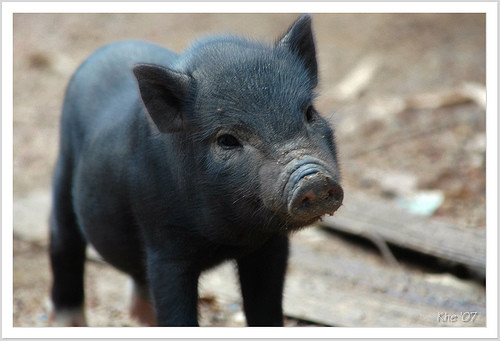June 22, 2010
Pigs are reservoirs of Influenza
Why were the older people less affected by the new flu?
![]() The elderly, especially those older than 65 years, that is, born before 1944, constitute the part of the population less affected by H1N1. It was suggested and later confirmed by CDC that it is about the prior immunity to the virus. These people probably have been exposed to a virus similar enough to the new H1N1 for the developed antibodies to still provide protection.
The elderly, especially those older than 65 years, that is, born before 1944, constitute the part of the population less affected by H1N1. It was suggested and later confirmed by CDC that it is about the prior immunity to the virus. These people probably have been exposed to a virus similar enough to the new H1N1 for the developed antibodies to still provide protection.
And this idea was put to test by a research group from the Mount Sinai School of Medicine. Using mice as measurers in the lethal challenge, as these animals die when infected by the strain of 2009, they were able to test the protection offered by the antibodies developed against various lineages of human influenza, from 1918 to the present day.
As strange as it may seem for antibodies against human lineages to be efficient against the swine virus, a review in the history of our flus shows that this is not at all absurd. Both humans and pigs were infected by a bird lineage soon before 1918, which has evolved since then in parallel with some occasional bumps.
And this similarity was actually confirmed. Mice infected with the inactivated human virus from 1918 to 1943 in order to develop antibodies were protected against the pandemic virus of 2009, and this was also the case of mice infected with the common swine virus or with the swine lineage of the vaccine of 1976. This shows that until 1943 the human and swine lineages had not yet diverged enough to end cross immunity, and that this similarity is still present in the pig’s virus. Therefore, the people infected with the older lineages or vaccinated in 1976 already have the protective immunity against the new H1N1.
The implications of this study are several and important. Firstly, it shows that priority should be given to vaccination of the youth with the new vaccine, which is already being distributed, since the older population is immune. Another very important implication is the role of pigs. Seen before as the only intermediaries between birds and humans, they have also shown to be reservoirs of the virus that infected us, and our immune system has forgotten. This virus may leap to humans again and find another susceptible population born after the human lineage becomes more different from that of the swine.
Secondly, we can look at the evolutionary history of the influenza in humans and pigs in another way. Although both have a common origin, they went their separate ways with different rates of evolution. The human virus face a growing heterogeneous population with a life span long enough for a same person to be infected more than once, which favors the lineages able to vary enough to escape the previous immunity. However, the swine virus found a host with a smaller population, which suffer fewer migrations and is more homogeneous (once we artificially selected and crossed only the more productive individuals), which is renewed periodically.
All this contributes to pigs serving as true museums of Influenza, maintaining the lineages that have already circulated more often among persons and can be the source of new pandemic lineages, as we just discovered in practice. Among them are the viruses H1 and H3 that infected pigs since 1990 till present.
Source (via This Week in Virology):
Manicassamy, B., Medina, R., Hai, R., Tsibane, T., Stertz, S., Nistal-Villán, E., Palese, P., Basler, C., & García-Sastre, A. (2010). Protection of Mice against Lethal Challenge with 2009 H1N1 Influenza A Virus by 1918-Like and Classical Swine H1N1 Based Vaccines PLoS Pathogens, 6 (1) DOI: 10.1371/journal.ppat.1000745
No Comments » Posted in: Pandemic, evolution, prevention, vaccine


